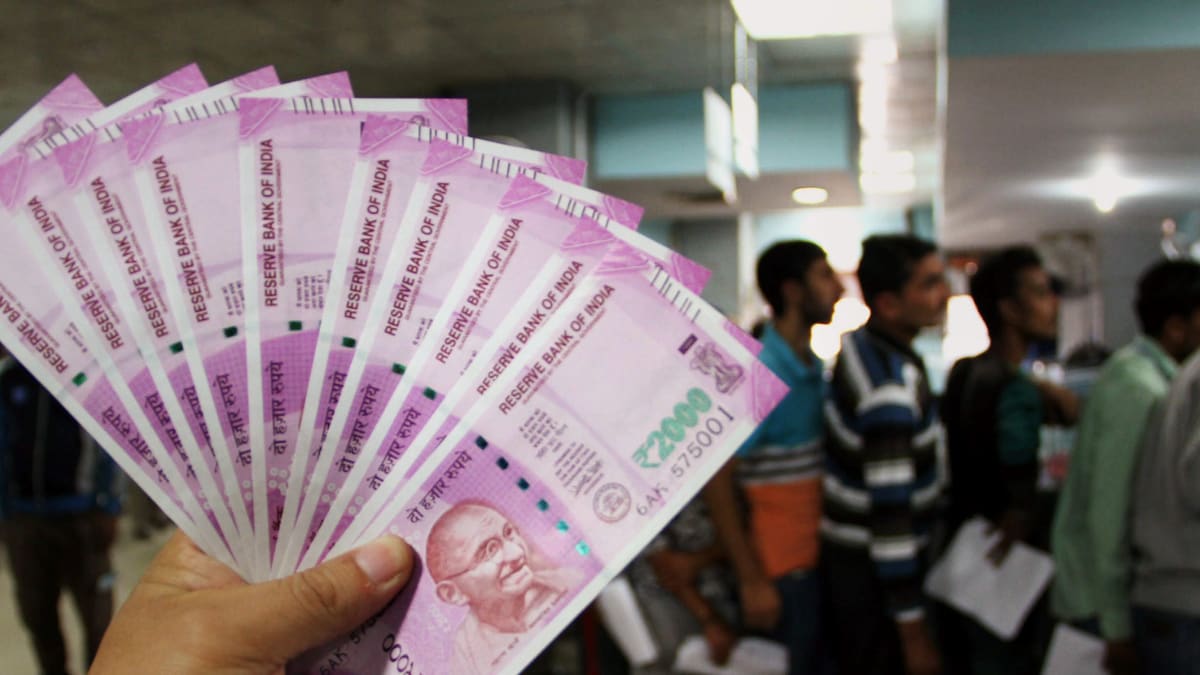Rs 2,000 Note Exchange Or Deposit: Before Going To Bank, Know These Key Things

The Rs 2,000 banknotes were introduced primarily to replenish the notes withdrawn following demonetisation in 2016. (Representational pic/PTI)
As per the RBI guidelines issued on Friday, a person can exchange up to a limit of Rs 20,000 at a time.
Rs 2,000 Currency Notes: The 131-day window to exchange Rs 2,000 rupee notes opened on Tuesday, May 23, with a mixed bag of small queues and confusion at some banks over the requirement of officially valid identity cards like PAN or Aadhaar, and official forms.
Unlike November 2016, when old Rs 500 and Rs 1000 notes – constituting some 86% of the currency in circulation – were banned overnight, Rs 2,000 currency notes continue to be legal tender for now, and the exchange window is more than double of that provided in 2016.
Also Read: Rs 2,000 Note Exchange Made Simpler: SBI, PNB And HDFC Bank Make Rules Easier
While the Reserve Bank of India (RBI) has not made the presentation of a valid ID or filling of deposit forms mandatory, there were complaints from some places that banks were demanding customers to submit identity cards as proof. Some banks exchanged notes by making an electronic entry, few others asked customers to pen down their name and mobile number in a register without giving any identity proof.
Things to keep in mind when depositing Rs 2,000 notes in bank account
Rs 2,000 note deposit in bank rules and Rs 2,000 note deposit limit
- Customers must carry PAN Card/Number for depositing Rs 2,000 notes for more than Rs 50,000 amount deposit in the account
- The RBI has said that banks will follow their own process and rules in case of an exchange of Rs 2,000 notes.
- However, it added that there is no limit on the amount of deposits that can be made in the bank account of a customer. The KYC norms will be applicable in case of deposits.
- It means the existing income tax requirement of furnishing PAN for deposits of Rs 50,000 or more in bank accounts will continue to apply for deposits of the withdrawn Rs 2,000 notes.
Things to keep in mind when exchanging Rs 2,000 notes from a bank
- As per the RBI guidelines issued on Friday, a person can exchange up to a limit of Rs 20,000 at a time.
- State Bank of India, the country’s biggest bank, in an official memo to its branches that no form or identity proof would be required while exchanging or depositing Rs 2,000 notes.
- There were reports that initially some branches insisted on filling a form but later discontinued the practice after receiving instructions from their head office.
- Private banks like Kotak and HSBC said they are asking for form/ID Proof for non-account holders.
- Axis Bank, Standard Chartered, Yes Bank, Canara Bank and Bank of India said they are not mandating any form or ID proof.
- Bank of Baroda has said they don’t require any form but need ID proof for non-account holders.
- ICICI and HDFC have said they require all customers to fill out forms, but ID proof is needed only for non-account holders.
Moreover, RBI on Tuesday told the Delhi High Court that withdrawal of Rs 2,000 notes is not demonetisation but a statutory exercise, and the decision to enable their exchange was taken for operational convenience.
The RBI on Friday announced the withdrawal of Rs 2000 denomination banknotes as part of its currency management. It has maintained that this wasn’t demonetization as the Rs 2,000 notes continue to be legal tender, meaning they can be used for making payments.
The Rs 2,000 notes constitute around 10.8% of total currency in circulation or Rs 3.6 lakh crore. The notes can be exchanged or deposited till September 30, 2023.
(With PTI inputs)
For all the latest business News Click Here


